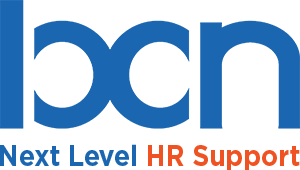Does payroll processing drive you nuts? You’re not alone – in the United States, 17% of organizations outsource all of their payroll processing as of 2018. Many more outsource specific parts of the process, such as payroll, time and attendance, sending out W-2s, or printing and distributing checks. This is a very understandable decision; they are tasks that are at once complex and tedious.
The problem comes when people choose to outsource to a specialist payroll processor. This can look like a good decision, but often the ROI of this choice is negative since you are only outsourcing payroll. On its own, that does not provide enough cost savings compared to other HR outsourcing solutions. Also, the savings for payroll outsourcing lessens as a company grows.
The problem comes down to the difference between payroll processors as a business and payroll processing as a service.
Payroll Processors vs. Payroll Processing
A payroll processor is a company that does only one thing: they process payroll. They don’t provide assistance with any other aspects of HR administration, and you still have to file the taxes after they tell you what they should be. Their biggest saving is the opportunity cost of employees spending time on the payroll that they could be spending on revenue-generating tasks.
Outsourcing payroll processing is valuable, especially if you have no in-house HR team and you are processing payroll yourself. Yet, payroll processors are still the wrong way to go about outsourcing payroll processing when other solutions can provide more comprehensive and tangible savings.
Three Problems with Payroll Processors
There are three specific problems with using a dedicated payroll processor:
Savings Decrease as Your Company Grows
At a certain size, you stop saving money. The cost of processing payroll in-house becomes the same as using a dedicated company. This can happen pretty quickly with some pricing models (many payroll processors charge based on your payroll amount or number of employees).
It can be hard to establish where the line is and where you should switch back to doing payroll in-house. Many companies will keep using the processor out of inertia even as the ROI drops. Change is hard. Meanwhile, a more comprehensive solution can adjust to your needs as your company grows, helping you deal with changing costs and regulatory requirements.
Payroll Produces Relatively Minor Time Savings
If you are doing payroll yourself, it can feel as if you are spending a lot of time on it. However, compared to other tasks typically handled by HR, such as benefits administration, the time savings look a lot less. Payroll stands out as a task that is a particular time burden because it has to be done regularly and takes about the same amount of time. This makes it low-hanging fruit for time savings, but there are other HR tasks that end up taking more time when you look at the big picture.
By using a more comprehensive solution, you can also pass on other administrative burdens. This might include the paperwork aspects of onboarding new employees, administering workers’ compensation, setting up employee training after you have decided what is needed, etc. If you outsource to a professional employer organization (PEO), they can handle all of these tasks. They will process payroll, administer benefits, handle new employee paperwork, help you develop your return-to-work program, and otherwise remove many of your HR administrative burdens and free you and your employees to work on growing the company.
Unlikely to Produce Positive ROI
The only way to get a positive ROI from payroll processors is if the time being spent on payroll would otherwise be spent on generating revenue. This is especially likely if it is the business owner rather than an administrative assistant or other employees who does payroll. However, the ROI drops if you have even a single HR team member.
Even then, the savings are not tangible and are in opportunity costs, which makes it hard to measure and justify the ROI. An ideal HR outsourcing solution goes further than that, creating tangible savings other than time.
In comparison, a PEO gives an average ROI of 27%. This is possible because partnering with a PEO gives you access to their master benefits plan. As this plan is shared by all of their clients, you get the benefit of effectively having thousands of employees in your plan, lowering group health insurance rates, and giving you access to much better benefits.
Payroll processors can appear to be a good idea, especially if you are doing payroll yourself, and it is giving you a headache. However, they are inferior to professional employer organizations and other more comprehensive HR solutions that provide much greater savings in both time and money. Outsourcing your HR also reduces worry about HR issues and compliance issues. It allows you to focus on growing your business and creating a happy, productive work environment.

